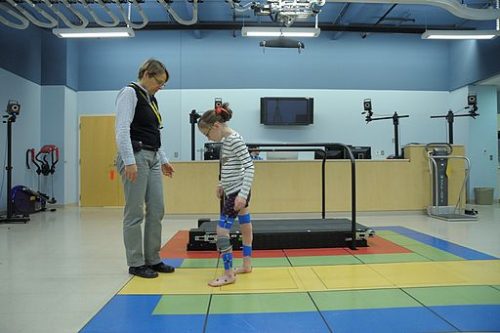
Transforming Smiles and Lives
The journey from “before” to “after” braces is not just about straightening teeth; it’s a transformation that can profoundly impact an individual’s confidence, oral health, and overall well-being. In this comprehensive article, we’ll explore the world of orthodontics, delving into the before and after effects of braces, and how they play a pivotal role in creating beautiful smiles and healthy mouths.
Before Braces: The Smile in Need of Transformation
The Emotional Impact: For many individuals, the decision to get braces is driven by a desire for a more attractive and confident smile. Before braces, those with misaligned teeth or bite issues may experience a range of emotions:
- Self-Consciousness: People with crooked or crowded teeth may feel self-conscious about their smile, often avoiding open-mouthed laughter or even hiding their teeth while talking.
- Teasing and Bullying: Younger individuals, in particular, may be subjected to teasing or bullying due to the appearance of their teeth, which can lead to self-esteem issues.
- Difficulty with Chewing and Speaking: Misaligned teeth or bite problems can sometimes affect a person’s ability to chew food properly or pronounce certain words.
- Oral Health Concerns: Crooked teeth can be more challenging to clean, increasing the risk of tooth decay, gum disease, and other oral health issues.
The Orthodontic Consultation: The journey to a straighter smile typically begins with an orthodontic consultation. During this initial appointment, the orthodontist assesses the individual’s oral health, discusses treatment options, and creates a personalized treatment plan.
Treatment Options Before Braces: Before braces, individuals may explore various orthodontic treatment options, including:
- Traditional Braces: These consist of metal brackets and wires that are adjusted periodically to gradually move the teeth into their correct positions.
- Ceramic Braces: Similar to traditional braces but less noticeable due to clear or tooth-colored brackets.
- Invisible Aligners: These clear, removable trays (e.g., Invisalign) offer a discreet alternative to traditional braces.
During Braces: The Transformation Journey Begins
The Braces Fitting: Once the treatment plan is in place, the braces fitting marks the beginning of the transformation. During this appointment, brackets are affixed to the teeth, and wires are attached to guide the teeth into their desired positions.
Orthodontic Adjustments: Throughout the course of orthodontic treatment, individuals must visit their orthodontist regularly for adjustments. These appointments involve tightening wires, changing rubber bands, and ensuring the treatment progresses as planned.
Challenges During Braces: While braces are effective at straightening teeth, they come with some challenges:
- Discomfort: The initial placement and adjustments can cause discomfort and soreness, which usually subsides after a few days.
- Dietary Restrictions: Certain foods, such as sticky candies and hard nuts, must be avoided to prevent damage to the braces.
- Oral Hygiene: It’s essential to maintain excellent oral hygiene during orthodontic treatment to prevent tooth decay and gum issues.
After Braces: The Transformation Revealed
The Big Reveal: The moment when braces are removed is a highly anticipated event. The “after” of braces reveals a smile that has undergone a significant transformation. The teeth are straighter, the bite is aligned, and the overall appearance of the smile is greatly improved.
Increased Confidence: After braces, individuals often report increased confidence and self-esteem. They no longer feel the need to hide their smiles and are more willing to engage in social situations without fear of judgment.
Oral Health Benefits: Beyond cosmetic improvements, orthodontic treatment has substantial oral health benefits. Straight teeth are easier to clean and maintain, reducing the risk of tooth decay, gum disease, and other dental issues.
Retention Phase: After braces, individuals typically enter the retention phase. This involves wearing retainers to prevent the teeth from shifting back to their original positions. Retainers may be removable or fixed (bonded behind the teeth).
Options for Retainers:
- Hawley Retainers: These removable retainers consist of a wire that goes across the front of the teeth and an acrylic plate that fits against the roof of the mouth.
- Clear Retainers: Clear, removable retainers, like Invisalign aligners, offer a nearly invisible option for retention.
Opinions on Before and After Braces
Orthodontic treatment can be a life-changing experience, but opinions on braces vary:
Positive Opinions:
- Enhanced Confidence: Many individuals express a newfound confidence and pride in their smiles after braces, which can positively impact various aspects of their lives.
- Improved Oral Health: Straighter teeth are easier to clean, leading to better oral health and a reduced risk of dental problems.
- Functional Benefits: Correcting bite issues can lead to improved chewing, speech, and jaw comfort.
Challenges and Concerns:
- Discomfort: Some individuals find the discomfort associated with braces and orthodontic adjustments challenging to endure.
- Maintenance: Maintaining good oral hygiene during braces requires extra effort, which can be a concern for some.
- Cost: Orthodontic treatment can be costly, and not all individuals have access to insurance coverage.
Where to go for orthodontic treatment and the cost of braces can vary significantly depending on your location, the type of treatment you choose, and your specific needs. Here’s a general overview of where to seek orthodontic care and factors that influence the cost:
Where to Go for Orthodontic Treatment:
- Orthodontist’s Office: Orthodontists are dental specialists with advanced training in orthodontics. They are the go-to professionals for orthodontic treatment, including braces. Consider visiting an orthodontist for a thorough assessment and personalized treatment plan.
- Dentist’s Office: General dentists can provide some orthodontic services, particularly for mild cases. However, complex orthodontic issues are best addressed by orthodontists who specialize in this field.
- Orthodontic Clinics: Many orthodontic clinics specialize exclusively in orthodontic treatment, offering a wide range of options and expertise in braces, clear aligners, and other orthodontic appliances.
- Children’s Orthodontics: Pediatric orthodontists focus on orthodontic treatment for children and teenagers. They are well-equipped to address orthodontic issues at a young age.
- Teledentistry Services: Some companies offer teledentistry services that allow you to receive remote orthodontic consultations and treatment planning. While this may be convenient, it’s essential to ensure the quality and credibility of the provider.
- Dental Schools: Dental schools often have orthodontic clinics where students under the supervision of experienced faculty members provide orthodontic care at reduced rates. This can be a cost-effective option, but treatment may take longer due to the educational nature of the setting.
Factors Influencing the Cost of Braces:
- Type of Braces: The cost of braces can vary depending on the type you choose. Traditional metal braces are typically more affordable than clear aligners or ceramic braces.
- Severity of the Issue: The complexity of your orthodontic issues and the length of treatment required can influence the cost. Severe misalignment may necessitate more extended treatment and, consequently, higher costs.
- Geographic Location: The cost of orthodontic treatment can vary significantly based on your location and local market conditions. Urban areas often have higher fees than rural areas.
- Provider’s Experience: Highly experienced orthodontists may charge higher fees for their expertise. However, they may also provide more efficient and effective treatment.
- Additional Services: Some orthodontic treatments may include additional services such as X-rays, retainers, or follow-up appointments, which can impact the overall cost.
- Insurance Coverage: If you have dental insurance that covers orthodontic treatment, it can significantly reduce your out-of-pocket expenses. Be sure to check your insurance plan’s coverage and any limitations.
Cost Estimations:
The cost of braces can vary widely, but as a rough estimate:
- Traditional Metal Braces: On average, traditional metal braces can cost between $3,000 and $7,000, with variations based on location and complexity of the case.
- Ceramic Braces: Ceramic braces are typically slightly more expensive than metal braces, ranging from $4,000 to $8,000.
- Clear Aligners (e.g., Invisalign): The cost of clear aligner treatment can range from $3,000 to $8,000 or more, depending on the length of treatment and the provider.
It’s essential to schedule consultations with orthodontic providers to receive personalized treatment plans and cost estimates based on your specific needs. During these consultations, you can also discuss payment options, potential financing, and whether your insurance plan covers orthodontic treatment.
Remember that the cost of braces is an investment in your oral health and well-being, and the benefits of a straight and healthy smile can last a lifetime. Make sure to choose a qualified and experienced orthodontic provider who can guide you through the treatment process.
Conclusion: The Power of Orthodontic Transformation
The journey from “before” to “after” braces is a transformation that extends beyond aesthetics. It’s about enhancing self-esteem, oral health, and overall well-being. Orthodontic treatment provides individuals with the opportunity to achieve a healthier, more confident smile, and the impact of that transformation can last a lifetime. Whether the journey is embraced with excitement or faced with trepidation, the “after” of braces is a testament to the power of orthodontics in improving lives.
Frequently Asked Questions (FAQ) About Braces and Orthodontic Treatment
Considering orthodontic treatment and braces? Here are some commonly asked questions and their answers to help you understand the process better:
1. What is orthodontic treatment, and what are braces?
Orthodontic treatment is a dental specialty that focuses on correcting misaligned teeth and bite issues. Braces are orthodontic appliances consisting of brackets, wires, and bands that are used to straighten teeth and correct bite problems.
2. Who needs orthodontic treatment and braces?
Orthodontic treatment is for individuals with a wide range of dental issues, including crooked teeth, crowded teeth, gaps, overbites, underbites, and crossbites. The treatment can benefit both children and adults.
3. How do I know if I need braces?
A comprehensive dental examination by an orthodontist or dentist is the best way to determine if you need braces. They will assess your teeth, bite, and oral health and recommend treatment if necessary.
4. What are the different types of braces available?
There are several types of braces, including:
- Traditional Metal Braces: These are the most common type, featuring metal brackets and wires.
- Ceramic Braces: Similar to metal braces, but with clear or tooth-colored brackets for a less noticeable appearance.
- Clear Aligners (e.g., Invisalign): Clear, removable aligners that gradually move teeth into position without wires or brackets.
5. How long does orthodontic treatment with braces usually take?
The duration of treatment varies depending on the complexity of your case. It can range from several months to a few years. Your orthodontist will provide an estimated treatment timeline during your consultation.
6. Are braces painful?
Braces may cause discomfort or soreness, particularly after adjustments. This discomfort is temporary and can usually be managed with over-the-counter pain relievers or orthodontic wax to alleviate any irritation.
7. How often do I need to visit the orthodontist during treatment?
Orthodontic visits are typically scheduled every 4 to 6 weeks for adjustments and to monitor progress. The frequency may vary depending on your treatment plan.
8. Can I eat normally with braces?
While you can eat most foods with braces, there are some dietary restrictions. It’s advisable to avoid sticky, hard, or chewy foods that can damage or get stuck in the braces.
9. How do I maintain good oral hygiene with braces?
Proper oral hygiene is crucial during orthodontic treatment. You’ll need to brush and floss carefully to prevent tooth decay and gum issues. Orthodontic providers often provide special tools to assist with cleaning around braces.
10. Do braces require special care or maintenance?
Braces require regular care, including attending orthodontic appointments, avoiding certain foods, and following your provider’s instructions for maintaining the braces and any additional appliances.
11. Can I still participate in sports and activities with braces?
Yes, you can participate in sports and activities with braces. However, it’s advisable to wear a mouthguard to protect your teeth and braces from injury.
12. Is orthodontic treatment covered by insurance?
Orthodontic treatment may be partially covered by dental insurance, but coverage varies widely. Check with your insurance provider to understand your benefits and any limitations.
13. Can adults get braces?
Absolutely! Orthodontic treatment is not limited to children and teenagers. Many adults opt for braces to improve their smile and oral health.
14. What happens after braces are removed?
After braces are removed, you will likely enter the retention phase, during which you’ll wear retainers to maintain the new alignment of your teeth. Your orthodontist will provide specific guidance on retainer use.
15. Are there alternatives to traditional braces?
Yes, alternatives like clear aligners (e.g., Invisalign) provide a more discreet option for orthodontic treatment. However, their suitability depends on your specific orthodontic needs.
Orthodontic treatment with braces can lead to a healthier, straighter smile and improved oral function. Consult with an orthodontic specialist to discuss your specific needs and create a treatment plan tailored to you.












Leave a Reply